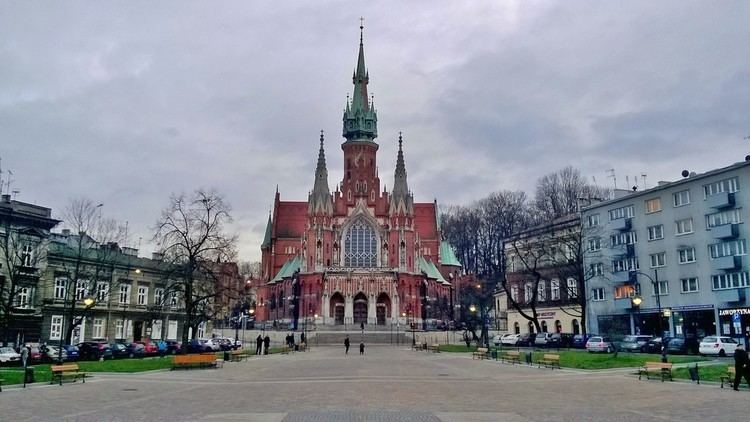Area 25.67 km² | ||
 | ||
Podg rze pearl of cracow part 1 2
Podgórze is a district of Kraków, Poland, situated on the right (southern) bank of the Vistula River, at the foot of Lasota Hill. The district was subdivided in 1990 into six new districts, see present-day districts of Kraków for more details. The name Podgórze roughly translates as the base of a hill. Initially a small settlement, in the years following the First Partition of Poland the town's development was promoted by the Austria-Hungary Emperor Joseph II who in 1784 granted it the city status, as the Royal Free City of Podgórze. In the following years it was a self-governing administrative unit. After the Third Partition of Poland in 1795 and the takeover of the entire city by the Empire, Podgórze lost it political role of an independent suburb across the river from the Old Town.
Contents
- Podg rze pearl of cracow part 1 2
- Map of PodgC3B3rze Cracow Poland
- Brief history
- Notable people
- References
Map of Podg%C3%B3rze, Cracow, Poland
The administrative reform of 1810 which followed the expansion of the Duchy of Warsaw brought Podgórze together with the rest of the historic city. However, after the Congress of Vienna made Kraków a free city in 1815, Podgórze fell back under the Austrian rule and remained there for the rest of the 19th century. According to Encyclopædia Britannica, in 1910 it was the 13th largest town in the Austrian-ruled Galicia (population 18,142 in 1900). In the years leading to the return of Polish independence, the city council discussions from July 1915 made Podgórze again a part of the Greater Kraków (Wielki Kraków); its president, the vice president of a single administrative unit.
Brief history
The oldest man-made structure in Podgórze is the Krakus Mound (Polish: Kopiec Krakusa) on Lasota Hill, believed to be the grave of the legendary prince Krakus. It is the largest prehistoric mound in Poland and one of the best view points in the city.
The Austrian bridge named Carl's Bridge (German: Karls Brücke), linking Podgórze with the Kraków proper across the Vistula was built in 1802. This wooden structure located between today's Mostowa and Brodzińskiego streets, survived only until 1813 when it was destroyed in a flood.
Towards the end of the Austrian rule, in 1915 the size of Podgórze reached 1⁄5 of the size of Kraków. Since the return of Poland's independence, it remained integrated into the city. It includes the historic part of Podgórze with the triangular market square and impressive St. Joseph Church as well as the green hills of Krzemionki with the World War II quarry called Liban. It also includes the site of the Nazi Kraków Ghetto and a factory of Oscar Schindler who saved nearly 1,200 Jews from the camps, as well as the old villages (now suburbs) of Płaszów, Rybitwy and Przewóz. The district population as of 31 December 2006 was 31,599 at an area of 2,456 ha.
